Have Your Say: How can the commercial interior sector turn our conversation on sustainability into actions? Part 2
At Design Insider we recognise the expertise within commercial interiors and we are proud to instigate conversations which inform, challenge & inspire the people who make our sector thrive.
The response to this month’s question is unprecedented! As a sector we’re clearly ready for action! We’ve published answers in two parts. Enjoy Part 1 here.
Last month we asked Commercial Interior Designers and Suppliers about their key sustainability considerations when addressing demolition and/or installation and discovered that for many re-use is paramount, achieved through a pre-demolition survey. We also learnt that, unsurprisingly, material and product research is vital. This month we are following on from this conversation by asking: How can the commercial interior sector turn our conversation on sustainability into actions?
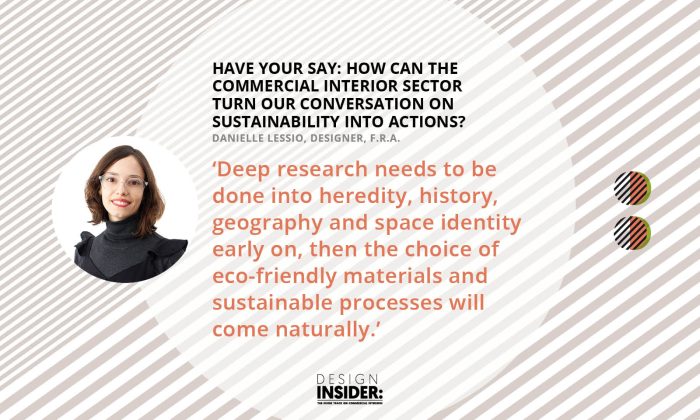
‘The premise of a sustainable project needs to be present from the initial concept phase so it can become embedded in real actions. Deep research needs to be done into heredity, history, geography and space identity early on, then the choice of eco-friendly materials and sustainable processes will come naturally.
It is necessary to understand the production chains and processes in direct relation to conditions and location of your project in the world, so that you can establish coherent guides that can be followed in all its stages. Each design will have unique characteristics and therefore a singular approach: whether investigating innovative technologies, reusing existing finishes, or even working together and learning from the local community’s heritage and its vernacular architecture.
From simple solutions to modern approaches, sustainability cannot be an afterthought, but a manifesto for design from conception.’
Danielle Lessio, Designer, f.r.a.
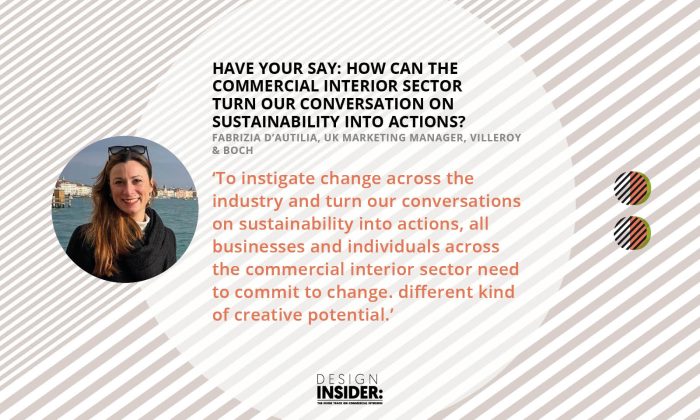
‘To instigate change across the industry and turn our conversations on sustainability into actions, all businesses and individuals across the commercial interior sector need to commit to change.
At Villeroy & Boch, developing sustainable products is one of the main pillars of our sustainability strategy. For example, our revolutionary TwistFlush WC flushing technology delivers an extra powerful flushing result while saving precious water every time you go to the toilet. With TwistFlush, a family of 4 easily saves up to 19,700 litres of water per year.
In addition to developing products which are sustainable, by 2024 Villeroy & Boch aim to be climate neutral in their global activities and have completed the switch to zero emissions production. This commitment to sustainability is needed across the commercial interior sector to instigate change.’
Fabrizia D’Autilia, UK Marketing Manager, Villeroy & Boch
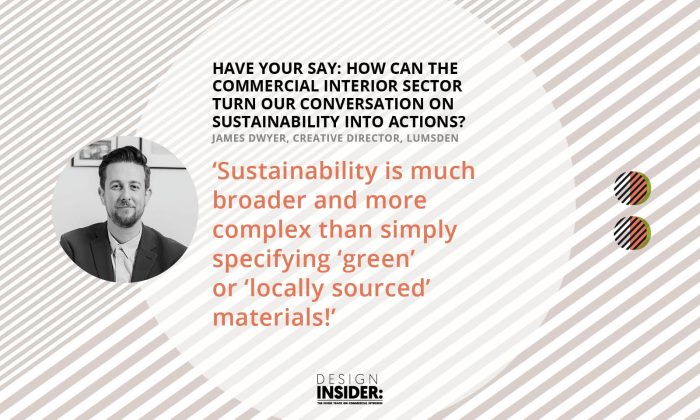
‘Sustainability is much broader and more complex than simply specifying ‘green’ or ‘locally sourced’ materials. As designers it’s vital to understand how the design decision making process can make a positive impact for social, environmental, and economic sustainability, and it’s our responsibility to step up and guide our clients, enabling them to make greater change and positive impacts. We need to embed a regenerative approach to design that aims to preserve and restore our natural environment and communities, this requires focused research to map the community, its identity, and its skills, to identify localised opportunities for participation in the project, for example by sourcing reclaimed materials and objects; commissioning bespoke artwork, furniture and fittings; and securing a long-term maintenance provision beyond completion. By maximising the use of repurposed/renewable materials, designing for longevity and disassembly, and streamlining production and logistics, we help support the circular design strategies that underpin regenerative design.’
James Dwyer, Creative Director, Lumsden
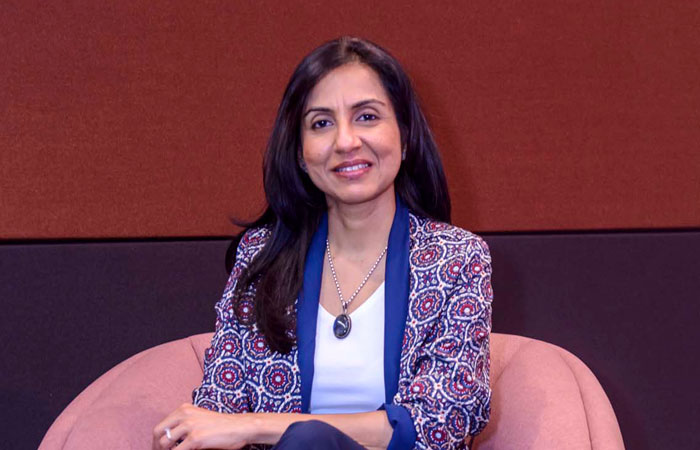
‘A change in the mindset of the industry is required.
Education, Collaboration and Awareness are key to action when it comes to sustainability.
While many organisations are demonstrating exemplary work and leadership, there are still a lot of designers that use sustainability as only a buzz word and that is why education is key.
- First, we need to train all members of our staff on the fundamentals of sustainability before we start preaching to our clients.
- Secondly, we need to collaborate as an industry (suppliers & manufacturers included) to understand our challenges and find long lasting solutions.
- Thirdly, make our clients and stakeholders more aware of how sustainability can be profitable for their business which will help drive projects in the right direction.
As designers we all are getting caught up in carbon calculations and certifications, but I believe a simple first step could be reuse and repurpose. We designers are great story-tellers and we can change how clients look at reused furnishings or materials. My new mantra is “Lets focus on purpose more than beauty.” ‘
Harsha Kotak, Founder, Women in Office Design (WOD)
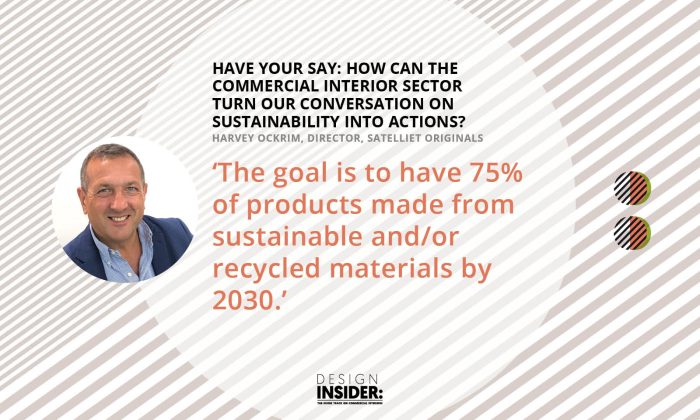
‘The future of sustainable furniture is incredibly important to Satelliet UK and is a conversation the team have with designers regularly and have been for a while. The goal is to have 75% of products made from sustainable and/or recycled materials by 2030, and we are already acting upon these intentions with the creation of the SUM (Still Usable Materials) collection. This collection has a lower environmental impact compared to traditional products. Another key factor in turning conversations to a reality is striving to use energy-efficient processes and equipment that actively reduce waste. To make a change in the commercial interior sector relies on collaboration, between the brand, the designers, the processes, and the materials.’
Harvey Ockrim, Director, Satelliet Originals
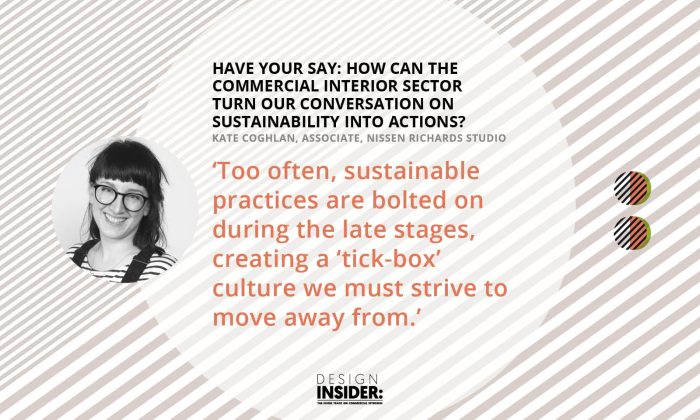
‘It’s critical that an approach to sustainability is meaningfully embedded in a project from the outset. Too often, sustainable practices are bolted on during the late stages, creating a ‘tick-box’ culture we must strive to move away from. As designers we need to be specific: what does ‘sustainability’ actually mean of each stage of each project?
Designers sit between clients on one side, and suppliers and manufacturers on the other – and as such are in a good position to push a sustainable agenda towards realisation. On the client side, this is about asking the right questions early on to establish intent, and clearly communicating material and methodology options prior to specifying. When it comes to suppliers and manufacturers, it’s crucial designers undertake thorough research to avoid relying on the same known providers or solutions and to remember to focus also on the beautiful and meaningful.’
Kate Coghlan, Associate, Nissen Richards Studio
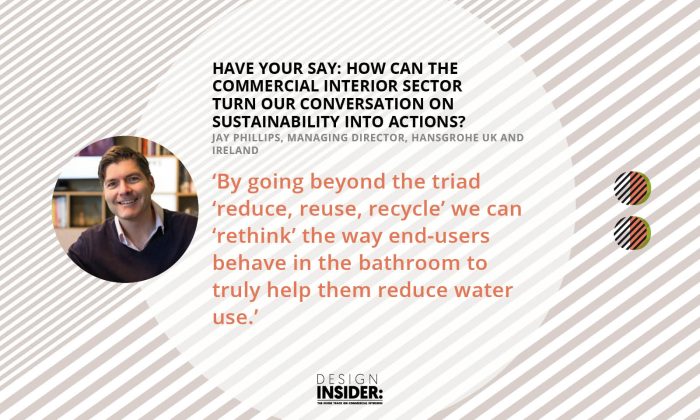
‘As a manufacturer operating in the commercial bathroom interiors space, we have a responsibility to develop new solutions that are not only produced more sustainably but above all, make more efficient use of resources in the bathroom.
By going beyond the triad ‘reduce, reuse, recycle’ we can ‘rethink’ the way end-users behave in the bathroom to truly help them reduce water use. For example, through hansgrohe’s Green Vision concept – which uses 90% less water and energy than a standard bathroom design – we have separated hygiene and wellness to enable waterless bathroom rituals. This includes SPHERE, a conceptual area of the bathroom used for mental retreat, which includes an inviting armchair with a flexible dome. The dome creates a multi-sensory experience through an interplay of light, sounds and warm water vapour infused with essential oils. There is also the ability to open or close the dome, which creates different states that impact the intensity of the experience, almost like a bathtub, but without wasting water and energy.
Through the Green Vision, we have taken conversations around sustainability and developed technical, innovative concepts that are already being incorporated into the development of AXOR and hansgrohe products. This will continue to inspire Hansgrohe’s overall ambition to reduce water consumption in the bathroom without compromising on experience.’
Jay Phillips, Managing Director, Hansgrohe UK and Ireland
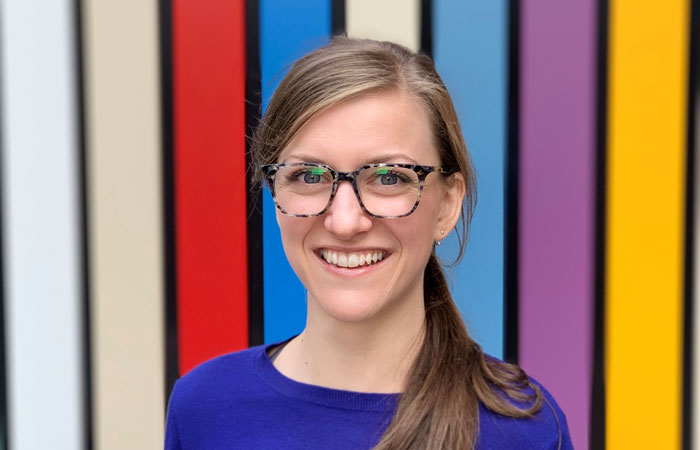
‘It is important to think about end of life, or next life, when specifying materials, furniture and lighting on a project. Designers and suppliers are increasingly aware of the need for sustainable, recycled materials in their schemes but as a whole need to work on solutions for what happens when shops and restaurants, inevitably, need to be stripped out and refurbished.
More suppliers need to offer schemes to return materials and products that can then be sold on, recycled or upcycled into new products. This could also include offering buy back schemes or discounts for returning materials to them which would encourage more usage and reduce the cost of sustainable materials making them more likely to be used.’
Emma Carter, Associate Creative Director, Phoenix Wharf
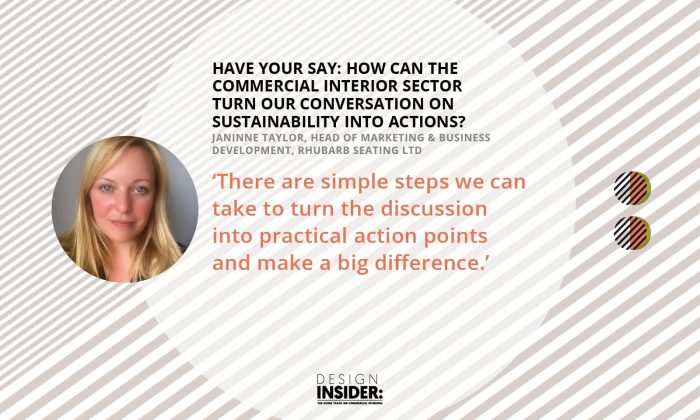
‘The conversation around sustainability within the commercial interiors sector is really exciting at the moment. There are simple steps we can take to turn the discussion into practical action points and make a big difference.
Review your supply chain. Select suppliers who share the same ethos to reduce their carbon footprint in the production and supply of their materials. At Rhubarb Seating we predominantly source from UK suppliers and hold the ISO 14001 standard for an effective Environmental Management System.
Work with sustainable materials. All our timber is sourced responsibly and ethically from FSC®-certified suppliers. Wood is a great material because it is 100% biodegradable. There are also some fantastic 100% recycled fabrics available.
Reduce waste. We made an investment in design software that links to our CNC machine, which reduced our wood waste by 75% over the last two years. Finding simple ways to reduce waste or improve efficiencies supports sustainable manufacturing processes.’
Janinne Taylor, Head of Marketing & Business Development, Rhubarb Seating Ltd
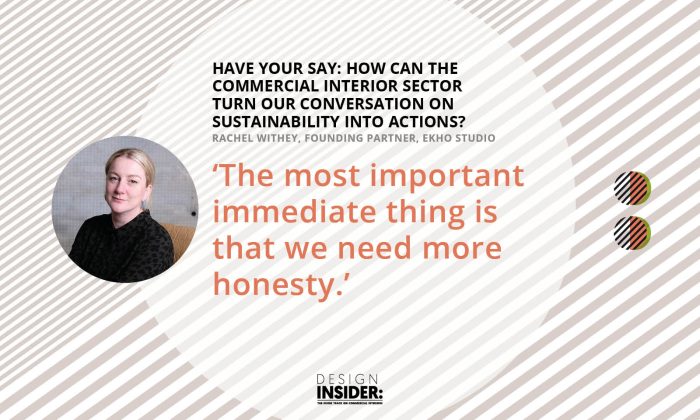
‘The most important immediate thing is that we need more honesty. I’d much rather someone said – ‘We’re not there yet but this is what we’re doing to get there’ – when I ask about sustainable credentials on a product or material, than giving a generic answer. More than once, I’ve had to make a separate call to technical teams to get the hard facts!
Another challenge is the cost of EPDs, which needs to come down if they’re to become truly mainstream and adopted by more suppliers, not just the larger companies. Clients could do with a bit of a reality check sometimes too. Sustainable designing takes longer, can cost more and needs to be a serious part of a project at the outset. It can’t be retro-fitted at the end by marketing teams. So, more straight dealing all round please!’
Rachel Withey, Founding Partner, Ekho Studio 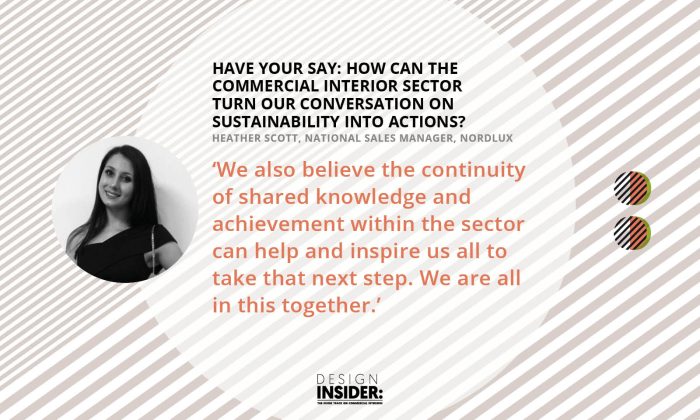
‘At Nordlux we believe to make these actions on sustainability it’s a development of small goals set with realistic time scales to continuously achieve change. Sustainability to us is a marathon and something we want to incorporate and educate thoughout our business and people. It’s actions taken by all areas of the industry from suppliers like ourselves making the changes to our value chain, recycled packaging and reducing our carbon footprint in our transportation and distribution, to the projects incorporating sustainability choices into the specifications right from the start. We also believe the continuity of shared knowledge and achievement within the sector can help and inspire us all to take that next step. We are all in this together.’
Heather Scott, National Sales Manager, Nordlux
For our July Have Your Say article we are asking: What is the most extraordinary thing happening in the hotel sector right now?
We would love to publish your opinion, please email your answer (50-150 words), name, title, company and portrait to alys@designinsiderlive.com Copy deadline 20th June.




